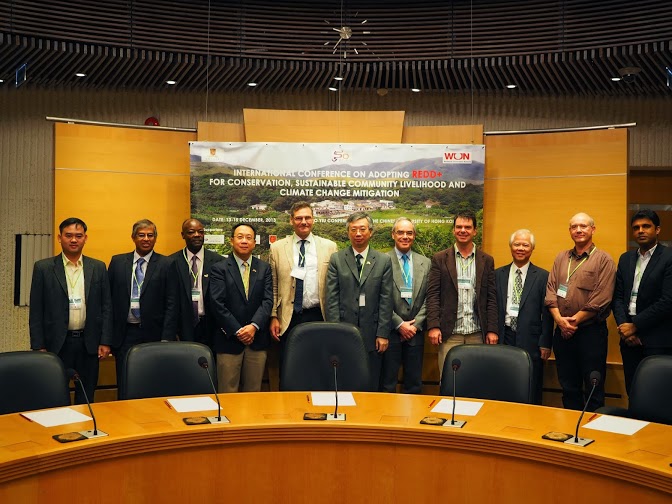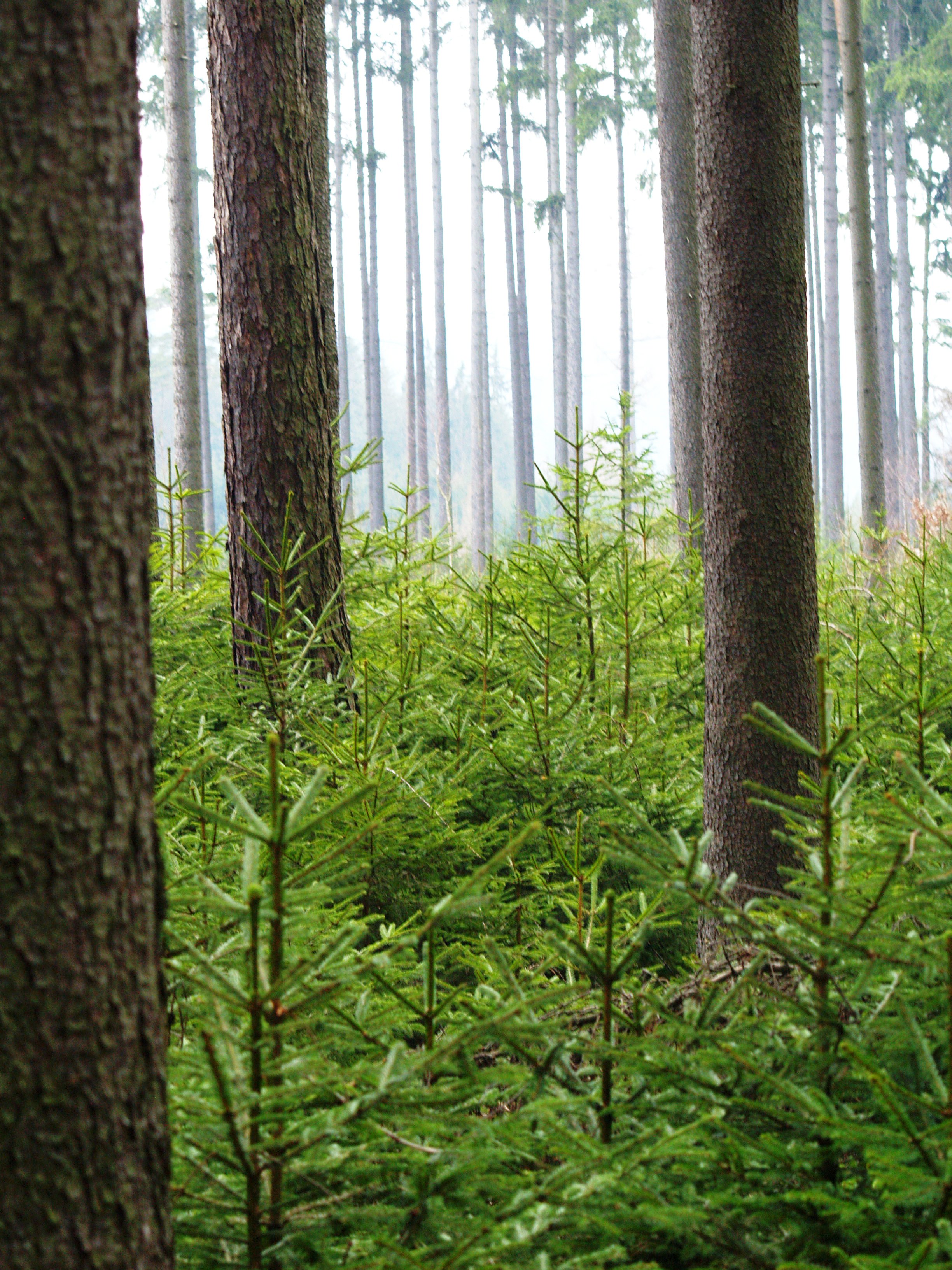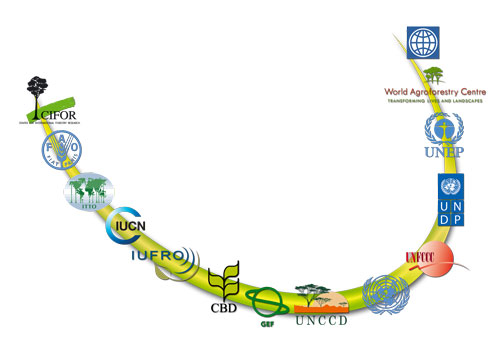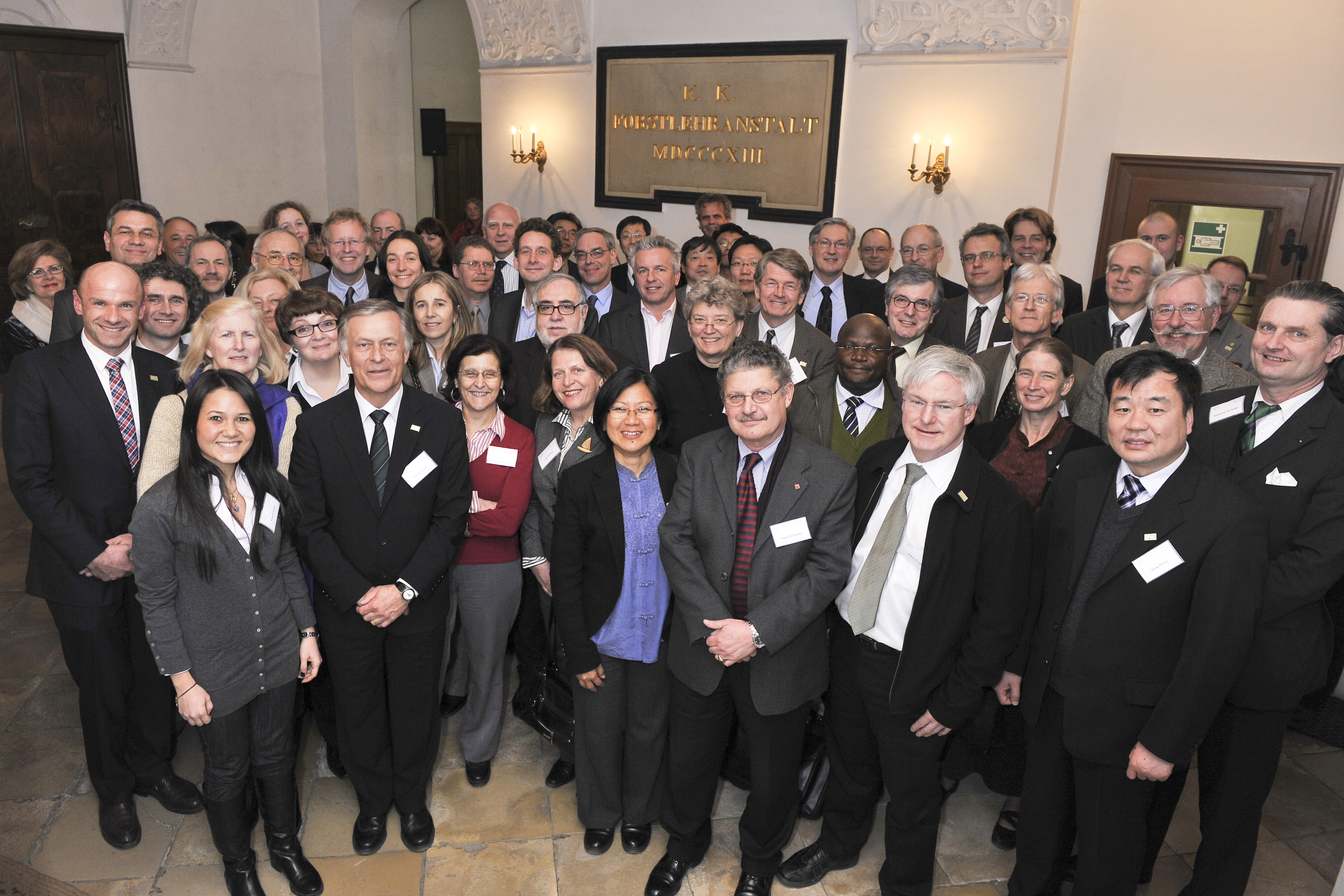World Wood Day – Celebrating “Wood is Good” by Cultural Approach
World Wood Day – Celebrating “Wood is Good” by Cultural Approach
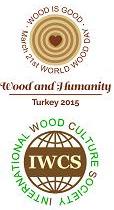 Report by Howard Rosen, Coordinator of IUFRO Working Party 5.10.01 Wood Culture, http://www.iufro.org/science/divisions/division-5/50000/51000/51001/ , and Andrew Wong, Deputy Coordinator of IUFRO Division 5 Forest Products, http://www.iufro.org/science/divisions/division-5/50000/ .
Report by Howard Rosen, Coordinator of IUFRO Working Party 5.10.01 Wood Culture, http://www.iufro.org/science/divisions/division-5/50000/51000/51001/ , and Andrew Wong, Deputy Coordinator of IUFRO Division 5 Forest Products, http://www.iufro.org/science/divisions/division-5/50000/ .
How would you like to go the a celebration with people from 93 countries, including wood carvers and turners making art pieces, musical groups playing wooden instruments, tree planting to improve the environment, talks on how the use of wood has affected people’s lives throughout history, and other entertainment such as folk dancing and puppeteering? Well one just occurred in Odunpazarı District of Eskişehir, Turkey, from March 6-31, 2015 with over 400 attendees. Read more…
Can REDD+ Achieve Conservation, Livelihoods and Climate Change Mitigation Goals?
By John Parrotta (Deputy Coordinator, IUFRO Division 8) and Lawal Marafa (Chair of the Conference Organizing Committee)
Dealing with uncertainties
REDD+ (reducing greenhouse gas emissions from deforestation and forest degradation, and enhancing forest carbon stocks in developing countries) is an evolving mechanism for climate change mitigation under continued debate within and outside of the UN Framework Convention on Climate Change (UNFCCC). While it has the potential to realize its primary climate change mitigation objective, there is considerable uncertainty regarding its actual or potential impacts on biodiversity, forests and the livelihoods of people in the tropical and sub-tropical forested landscapes where REDD+ implementation is envisaged.
Bringing science to the people
How IUFRO’s Special Programme for Development of Capacities (SPDC) contributes to enhancing forest science communication within the framework of a Climate Change Adaptation Program in Bhutan.
Would you like to see your forest be wrapped up in plastic? Well, this is what Bhutanese society will witness due to a research project that aims at simulating drought, which may affect the region’s forests in the future as a result of climate change. In order to inflict drought stress on mature trees, entire research plots of considerable size have been covered with plastic roofs in about 2 m height above ground level, preventing rain water from reaching the soil and roots of trees. But would local people show understanding for such a measure and approve of it easily?
Addressing the challenges of higher Forestry education
How well-prepared are today’s forestry students? How do professionals, teachers, and students themselves perceive upcoming challenges and chances in terms of forestry education? Do university curricula adequately prepare forestry graduates to meet the demands and needs of the job market?
IUFRO, the global network for forest science cooperation and IFSA, the International Forestry Students’ Association are well-positioned to tackle this issue of forestry education at an academic level, owing to their global scope and mission statements.
IUCN Campaign – Plant a Pledge
IUCN has launched a campaign, « Plant a Pledge » , and is asking readers to sign the petition at www.plantapledge.com. It takes just a minute of your time!
IUCN is hoping that you will help the campaign by reaching out as widely as possible, by helping to promote the campaign through your networks, through publicising it through the web, social media, presentations and word of mouth.
Plant a Pledge – www.plantapledge.com – is an opportunity for the global public to tell world leaders and land owners that they support the goal to restore 150 million hectares of degraded and deforested lands by the year 2020. The goal is an implementation vehicle for achieving CBD Aichi Target 15 and has become known as the “Bonn Challenge” after it was launched in Bonn, Germany, in September 2011.
The Bonn Challenge target to restore 150 million hectares by 2020 came second when over 1 million people took part in the on-line public Rio Dialogue vote for the most important global recommendation during the recent UN summit in Brazil, “Rio+20”.
Restoring 150 million hectares would inject billions of new dollars into economies every year, and would significantly help mitigate climate change, boost biodiversity and reduce poverty.
The Plant a Pledge petition will gather the signatures from people across the globe, and will be personally delivered by our Ambassador Bianca Jagger to senior delegates at an upcoming high level international meeting, urging land owners and governments to dedicate land to landscape restoration.
Help gather enough signatures to really turn the heads of those leaders and convince them to commit to the Bonn Challenge.
The website www.plantapledge.com will give you lots more information on the campaign and on forest landscape restoration.
Please go there now and sign the petition and urge all your friends, contacts and networks to do the same, by forwarding this message, and ideally also by sharing it through other means.
If you have time to explore the site, you might like to watch the videos, explore the interactive restoration globe, read the case studies and learn more about the issue and the campaign.
Other things you can do to support this important campaign are:
– follow the campaign on twitter: http://twitter.com/PlantAPledge
– ‘like’ the campaign on facebook: http://www.facebook.com/plantapledge
– Tell all your friends, colleagues and networks and ask them to sign, too!
Thank you for your support!
Forests are a Path to Sustainable Development
13 May 2011, New York – As discussions draw to a close at the UN Commission on Sustainable Development (CSD) in UN Headquarters this week, members of the Collaborative Partnership on Forests (CPF), an international mechanism composed of 14-forest related organizations and secretariats, are calling upon countries to pay more attention to the crucial contribution of forests to sustainable development.
Members of the CPF are working to improve management, conservation and sustainable development of all types of forests. Sustainably managed forests contribute directly to poverty reduction by providing jobs, incomes, and consumable goods for poor families.
“At a time when we are faced with environmental, social, and economic crises that are daunting; the CPF is working intensively together to further catalyze the positive contributions of forests, including the livelihoods of forest-dependent people, as is being celebrated in 2011, the International Year of Forests.” says Jan McAlpine, Director of the United Nations Forum on Forests Secretariat. “Forest services and benefits are multifaceted and wide-ranging, from the environmental contributions to the social and economic. Cross-sectoral and cross-institutional cooperation and a people-relevant approach is vital not only to management of forests but for advancing sustainable development around the world.”
“Further analysis is needed during the International Year of Forests, to emphasize the connection between people and forests, and the benefits that can accrue when forests are managed by local people in sustainable and innovative ways” says Eduardo Rojas-Briales Assistant Director-General of the FAO Forestry Department. “Together we must continue to pursue multiple pathways towards sustainable development using forests at all levels.”
Rojas called attention to the 2011 edition of FAO’s State of the World’s Forests, which provides an analysis of how forests support people’s livelihoods and the development of sustainable forest industries. According to the report, forest industries are improving resource efficiency and recycling efforts and are making progress in promoting wood products as more environmentally friendly than alternative materials. Moreover, State of the World’s Forests 2011 indicates that community-based and traditional knowledge forest management approaches can help communities harvest and sell non-wood forest products to create more sustainable livelihoods.
The relevance of traditional forest-related knowledge and practices to global efforts to advance sustainable forest management, biodiversity conservation, adaptation to environmental change, and livelihood security is highlighted by a 6-year global study that has recently been completed by the International Union of Forest Research Organizations.
Emmanuel Ze Meka, Executive Director of the International Tropical Timber Organization noted that “Already in many tropical countries, sustainably managed forests and the products that arise from them are contributing to sustainable development at both the national and especially at the community level. But since sustainably managed forests still make up less than 10% of the total global tropical forest area, they clearly have the potential to play a much bigger role.”
A successful example of sustainable forest management can been seen in Guinea, where the Landscape Management for Improved Livelihoods (LAMIL) project by the World Agroforestry Centre and the Centre for International Forestry Research has had a profound influence on the sustainability of four large forest areas. Prior to the project, local people were forbidden from using the forest resources and illegal logging, poaching and land clearance were leading to forest loss. The LAMIL project developed a system of co-management involving local communities and government where the local people derive real benefits from the forests, and in return have shown their willingness and ability to manage them sustainably.
“The project illustrates how changes in how forests are governed can lead to win-win outcomes for forests and people,” commented Frances Seymour, Director General of the Center for International Forestry Research. “This project has done much to improve the welfare of the local people,” said Dennis Garrity Director General of the World Agroforestry Center. “It has also shown that sustainable forest management and improved livelihoods are inextricably linked.”
“Forests, soils and water are a trilogy that are not stand-alone, self-sustaining resources” says Luc Gnacadja, Executive Secretary of the United Nations Convention to Combat Desertification. “To foster a holistic approach to the management of these environmental resources, we must attend to three things. First, we need to focus on the causes, not the symptoms of deforestation. Second, we also need to focus on the soil, which is the real source of life for the land. Third, the communities that maintain the ecosystems we depend upon need to be rewarded.”
At the recent United Nations Forum on Forests (UNFF) meeting in February, ministers and high officials agreed on a Ministerial Declaration which stresses that “forests are an integral part of the global environment and human well-being, providing multiple goods and services essential for people worldwide and crucial for sustainable development and the achievement of the internationally agreed development goals, including the Millennium Development Goals.” The UNFF Ministerial Declaration contains the most important global forest policy issues and concerns as the concrete input on forests to the upcomingRio+20 conference. Rio+20 (June 2012), marks the twentieth anniversary of the adoption of Agenda 21, the blueprint for sustainable development, agreed upon at the 1992 United Nations Conference on Environment and Development. The conference will review progress made towards sustainable development and map out future strategies to address sustainable development and environmental challenges.
For more information:
Gerda Wolfrum, wolfrum(at)iufro.org, International Union of Forest Research Organizations (IUFRO)
World Health Day 2011: Forests Provide Untapped Resources for Human Health
Vienna/Vantaa – “It is not commonly understood how much – even in our hypermodern urban age – human health and well-being are influenced by forests and trees”, said Professor Hannu Raitio, coordinator of the IUFRO Task Force on Forests and Human Health of the Vienna-based International Union of Forest Research Organizations, and Director General of the Finnish Forest Research Institute Metla in Vantaa, prior to World Health Day on 7 April. Research shows that there is a huge untapped economic and health potential in forest biodiversity. “Preserving biodiversity attains an autonomous value – independent of any uses known at the present time”, said Professor Raitio.
Loss of species and decrease in biodiversity always imply a potential loss of health-related ecosystem services and genetic resources. The conservation of the earth’s biological diversity, of which a large part is found in forests, is increasingly recognized as an important goal. Preserving biodiversity is rational also from an economic point of view. As noted in FAO’s State of the World’s Forests 2011, many top-selling herbal products such as goji and echinacea are derived from forests, and the collection and trade of raw materials continues to significantly affect forest economies. Probably more than half of the most prescribed medicines – also in the Western pharmacopoeia – are based on chemical compounds found in natural organisms. “Even if the drug is produced synthetically, it is often first found in nature, or it may be a modification of some naturally occurring compound. We start to realize that every organism is a potent bioreactor with unique capabilities”, stated Professor Raitio.
Medical treasures waiting to be discovered
Currently only less than one per cent of all known plants are thoroughly analyzed for pharmaceuticals and with microbes, fungi and animals the percentage is even smaller. Only a small fraction of all existing species of organisms have been discovered and described so far. Moreover, all higher plants are hosts to one or more endophytic microbes, organisms residing in tissues between or among living plant cells. Of the estimated 500,000 plant species living on the planet, only a handful has had their endophytic microflora thoroughly studied.
“There are medical treasures waiting to be discovered in forest plants literally everywhere. For example, we recently began a study on the microflora of the root system of the common Scots Pine, Pinus sylvestris“, informed Professor Raitio: “We wanted to see what kind of chemical substances can be found in the microscopic fungi that are living symbiotically with the tree, and test them against the age-related eye disease (AREDS), which is a major cause of vision loss in people of advanced age all over the world. We thought that in a few years we may find a substance that could be of potential use, but only after a few months of research we already had our first candidate. We are now cooperating with medical doctors to develop a medicine of it.”
Traditional medicine also greatly relies on forest resources, for example in the treatment of malaria. Most of the hundreds of millions of cases of malaria each year are in sub-Saharan Africa, where it is the second highest cause of death from infectious disease. Poor communities have limited access to modern drugs, with the majority relying on traditional medicine in treating malaria. The World Agroforestry Centre recently published a guide entitled ‘Common Antimalarial Trees and Shrubs of East Africa’, which describes 22 species of trees and shrubs that are used as antimalarial treatments in East Africa by traditional medical practitioners and rural communities. “These species have great potential for further study and development as readily available alternative treatments for the curse of malaria,” said Najma Dharani, the main author of the book.
Sustainable management of forests to be key
Forests support the livelihoods of millions of people by providing food, water, fuel, protection against natural hazards etc., and offer a range of health-related goods and services, from medicinal compounds to the support of our psychological capacity and mental health. The key to preserve these ecosystem services is sustainable forest management (SFM), aiming at a balance between society’s increasing demands for forest products and benefits, and the preservation of forest health and diversity. This balance is critical to the survival of forests and the health of people depending on forests. “These people do not only include the forest-dwelling native tribes in various corners of the world, but every one of us, wherever we live, and whatever is our industrial or economic level. This is the most important message for us all on the World Health Day and in the United Nation’s International Year of Forests 2011“, said Professor Raitio.
The international group of scientists of the interdisciplinary IUFRO Task Force recently suggested taking into account human health aspects in all forest management activities systematically. This could be done through applying the Health Impact Assessment (HIA), a program which is promoted actively by the World Health Organization (WHO) and is to date mainly being used in urban planning, to forest-related issues. For this purpose, a set of forest-related human health indicators could be developed and included in public health reports in a similar way as they are often included in reports on water, energy, mining, biodiversity and agriculture.
For more information:
Gerda Wolfrum, wolfrum(at)iufro.org, International Union of Forest Research Organizations (IUFRO)
IUFRO Task Force on Forests and Human Health
##############################
The Collaborative Partnership on Forests (CPF) is a voluntary arrangement among 14 international organizations and secretariats with substantial programs on forests. The CPF’s mission is to promote the management, conservation and sustainable development of all types of forest and strengthen long term political commitment to this end.
CPF members:
– Center for International Forestry Research (CIFOR)
– Food and Agriculture Organization of the United Nations (FAO)
– International Tropical Timber Organization (ITTO)
– International Union of Forest Research Organizations (IUFRO)
– Convention of Biological Diversity (CBD Secretariat)
– Global Environment Facility (GEF Secretariat)
– United Nations Convention to Combat Desertification (UNCCD Secretariat)
– United Nations Forum on Forest (UNFF Secretariat)
– United Nations Framework Convention of Climate Change (UNFCCC Secretariat)
– United Nations Development Programme (UNDP)
– United Nations Environment Programme (UNEP)
– World Agroforestry Centre (ICRAF)
– World Bank (World Bank)
– The International Union for Conservation of Nature (IUCN)
IUFRO Board Paves the Way for Attaining Strategic Goals
From 23 to 25 February 2011, more than 50 members of the IUFRO Enlarged Board from 24 countries met in Vienna, Austria, for the 50th IUFRO Board Meeting. This was the first gathering of the new Board that had been elected at the XXIII World Congress in Seoul, Korea, in August 2010, for the period 2010-2014.
The Board welcomed and approved those new members and officeholders that have decided to join IUFRO’s global network, and approved the establishment of various new Research Groups and Working Parties. It appointed IUFRO-SPDC Coordinator Michael Kleine as new Deputy Executive Director and welcomed Jan Heino as IUFRO’s new Development Officer.
The one-day business meeting was followed by a two-day scientific seminar in the nearby Vienna Woods to discuss how the six key research goals of IUFRO and, consequently, the three institutional goals formulated in the IUFRO Strategy 2010-2014 could be attained.
For this purpose, the IUFRO Enlarged Board members concentrated on preparing a roadmap for new Task Forces that would be dealing with the six research goals. Together with the proposed Task Force Coordinators – each of them internationally recognized experts in their respective fields – they identified those thematic areas to which the new interdisciplinary Task Forces can add the most value to both the scientific discourse and policy deliberations. For each theme they also discussed specific entry points for the nine Divisions. The Task Forces will not generate new research but assess and synthesize existing knowledge and identify knowledge gaps. They should not duplicate work that is already underway by other institutions. Forest governance as a cross-cutting issue should be addressed by all Task Forces.
IUFRO key research goals (Task Force Coordinators/Deputies):
Forests for People (Ulrike Pröbstl, BOKU/Perry Brown, University of Montana)
Forests and Climate Change (Frances Seymour, CIFOR/Markku Kanninen, University of Helsinki)
Forest Bioenergy (Rolf Björheden, Skogforsk/Elspeth McRae, Scion)
Forest Biodiversity Conservation (Bryan Finegan, CATIE/Saw Leng Guan, FRIM)
Forest and Water Interactions (Tony Simons, ICRAF/Shirong Liu, Chinese Academy of Forestry)
Resources for the Future (John Innes, UBC/Jung-Hwan Park, KFRI)
As part of the overall roadmap agreed at the seminar, each Task Force will define cross-disciplinary activities and expected outputs and enter them into a realistic time schedule considering the resources that might be needed and identifying potential Task Force members. The Task Force Coordinators were asked to present respective Terms of Reference by early April 2011. Results of the work shall be presented prominently, among a series of other occasions, at the XXIV IUFRO World Congress in autumn 2014 in Salt Lake City, USA.
IUFRO President Niels Elers Koch commented the process confidently, “In the past IUFRO sometimes failed to start Task Forces in the right way. It was often difficult to mobilize the great knowledge and experience available in our Divisions for science-policy interactions. With this meeting, however, we want to capitalize properly on this knowledge and involve the Divisions from the very start. So it seems that we have put the Task Forces on track successfully.“
XXIII IUFRO World Congress: The Seoul Resolution
In the Seoul Resolution, IUFRO sets its goals for the coming years.
THE SEOUL RESOLUTION
The XXIII IUFRO World Congress “Forests for the Future: Sustaining Society and the Environment” provided a unique forum for presentation and discussion of the results of current global research related to forests and trees. The Congress explored a broad range of current and emerging issues of great importance for the future of forests and their capacity to provide the environmental, economic, social, cultural, and health benefits that sustain rural and urban societies worldwide.
During this historic International Year of Biodiversity, in anticipation of the upcoming International Year of Forests, and recognizing the vital role that forest science must play in meeting the common challenges we face worldwide, IUFRO commits itself to:
Focusing more on scientific research and international collaboration in six thematic areas: Forests for People; Climate Change and Forestry; Bio-Energy; Forest Biodiversity Conservation; Forests and Water Interactions; and Forest Resources for the Future.
Further, IUFRO commits itself to the following goals:
Improving communication within the IUFRO structure, with other scientists, students, forest professionals, and the public; and increasing visibility and accessibility of research findings;
Expanding and deepening IUFRO’s work at the science-policy interface by enhancing scientific contributions to international processes, conventions, and organizations; responding rapidly to new policy issues; expanding partnerships and collaborating with international organizations and processes through the provision of scientific information and policy options;
Urging member institutions and external stakeholders to renew and strengthen forest monitoring activities and support global monitoring efforts;
Improving IUFRO’s capacity to expand its membership and funding base to provide support for the full range of IUFRO’s activities to benefit the forest researchers belonging to IUFRO’s member organizations; and
Promoting high-quality forest-related research and expanding IUFRO’s capacity for interdisciplinary cooperation; strengthening scientific capacity; relating the work of all IUFRO units to the six thematic areas; broadening IUFRO’s membership base; and identifying emerging issues and changing paradigms.
THE SEOUL RESOLUTION – LA RESOLUCIÓN DE SEÚL – LA RESOLUTION DE SEOUL – DIE RESOLUTION VON SEOUL
And the Winner is…
On Saturday, 28 August, the last day of the IUFRO World Congress, the winners of IUFRO’s Best Poster Award were announced. They are:
Div 1 / Pifeng Lei, University of Freiburg, Germany
“Belowground niche separation and productivity in tree species mixtures
Div 2 / Yoshihiro Hosoo, Shinshu University, Japan
“Isolation and analysis of a gene encoding a potassium membrane transport protein from Cryptomeria japonica”
Div 4 / Sungho Choi, Korea University, Korea
“Predicting the changes in forest distribution using the thermal and hydrological indices”
Div 5 / Lee Su-Yeon, Seoul National University,
“Analysis of terpenoids released during the drying process of Cryptomeria
japonica”
Div 6 / Maija Faehnle, Finnish Forest Research Institute, Finland
“Evaluating the use of social information in urban forest planning”
Div 7 / Takahashi Yukiko, The University of Tokyo, Japan
“Genetic diversity of the pathogen of Japanese oak wilt, Raffaelea quercivora, in the gallery bored in an oak tree, and mycaniga of the ambrosia beetle, Platypus quercivorus”
Div 8 / Ahn Young San, Korea Forest Research Institute, Korea
“Historical change in sediment yield in Lake Toro catchment, Kushiro/mire, northern Japan over the past 300 years”
CONGRATULATIONS!

